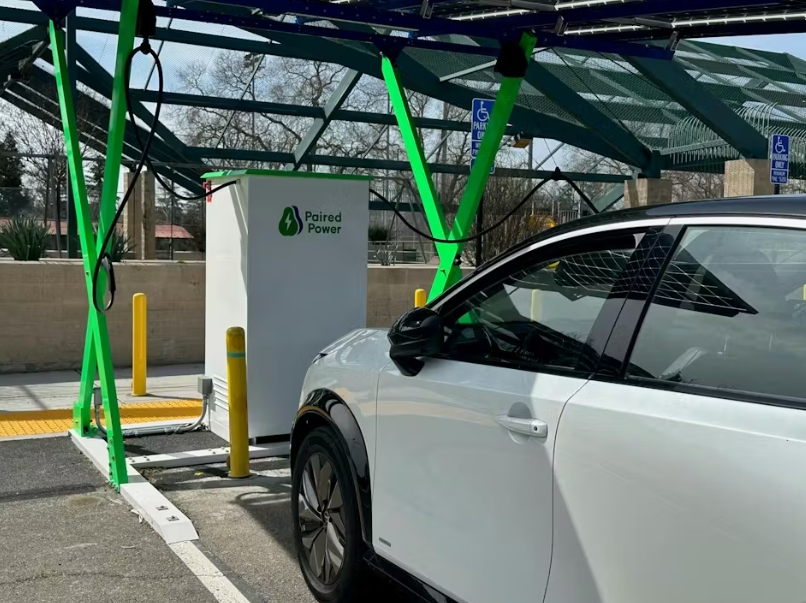
RS e-tron GT performance
Part of the two-car 2025 e-tron GT electric super sedan lineup in the US, the RS e-tron GT performance is joined by the new S e-tron GT model, maintaining excellent performance and all of the design aesthetic that the electric grand tourer is known for. Through significant upgrades in power, battery capacity, design, and materials, along with a host of chassis upgrades, the e-tron GT model line is capable of delivering a level of performance that rivals supercars.
For model year 2025, the new entry to the e-tron GT family—the S e-tron GT—extends the performance envelope of the previous top-spec 2024 RS e-tron GT. Horsepower for the S e-tron GT grows to 670, compared to 523 for the 2024 e-tron GT and 637 for the 2024 RS e-tron GT. The new S e-tron GT, due to a power increase, accelerates to 60 mph in just 3.3 seconds with launch control, 0.6 seconds quicker than the previous 2024 e-tron GT.
The new RS e-tron GT performance now holds the distinction of being the quickest accelerating production Audi ever. With launch control activated, its 912-horsepower powertrain propels it from 0-60 mph in just 2.4 seconds.

The increased copper density of the special hairpin winding in the electric motors’ stator maximizes current conduction, while the rotor in the rear motor is more compact and lighter.
Overall, Audi has reduced the rear-axle electric motor's weight by 22 pounds (10 kg). In addition, both electric motors have power reserves for dynamic driving situations. Launch Control can briefly use resources from the battery pack and electric motors for an output up to 912 horsepower. Moreover, the front motor features modified power electronics with a revised pulse inverter, enabling higher discharge currents up to 600 amps—300 amps more than the Audi S e-tron GT. The rear motor also operates at 600 amps.
Additionally, Audi has increased braking recuperation on e-tron GT models to 400 kW, providing a maximum deceleration value of 0.45 g. Up to this value, the car relies solely on recuperation. Coasting recuperation was increased to 0.06 g and 0.13 g (previously 0.03- and 0.06 g). In this way, Audi has widened the spread between the dynamic one-pedal feel and efficient coasting.
The e-tron GT battery pack has been upgraded to 105 kWh, a 12% increase over the previous 93.4 kWh, while its weight has decreased by 25 pounds. DC fast charging capability has also been increased, from 270 kW to 320 kW, resulting in a 10-80% charge time of about 18 minutes (previously 21.5 minutes) under ideal conditions. Even with the significant power increases, the EPA-estimated driving range of the 2025 S e-tron GT exceeds that of the 2024 e-tron GT, and 2024 RS e-tron GT.

One of the key development goals for the RS performance model was to achieve high efficiency across all load ranges and repeatable output availability, increasing the reproducibility of its superior capabilities. Adapted thermal management and intelligent interconnection of the four coolant circuits play a vital role—especially in RS performance mode, which is an exclusive feature of the top model.
When increased output is used on the RS e-tron GT performance, the thermal management system switches on the adaptive cooling circuit to ensure the battery pack is sufficiently cooled. The adaptive cooling circuit conditions the interior while simultaneously and actively lowering the temperature in the coolant circuits of the battery pack and two electric motors. Cooling of the electric motors, interior air conditioning, and conditioning of the battery pack can now be controlled largely independently of each other. Audi made significant changes to the system’s pumps and valves to optimize thermal management performance.
The battery pack’s new cell chemistry is also partly responsible for the increased output of the RS e-tron GT performance, with an adjusted ratio of nickel, cobalt and manganese, and a gross capacity of 105 kWh (97 kWh net); enabling a higher energy capacity, higher charging and driving currents compared to the previous model. Maximum charging current has been increased to 400 amps. When Launch Control is activated, up to 1,100 amps can be engaged.
This is also the case when using the new push-to-pass function in the RS e-tron GT performance, which provides a 94-horsepower (70-kW) increase in output at speeds above 19 mph (30 km/h), for up to ten seconds—indicated by a timer in the virtual cockpit. When the driver activates push-to-pass, the battery uses the same map as for Launch Control. At the same time, the drive components automatically switch to the Audi drive select mode dynamic. After a minimum of ten seconds of regeneration, the function can be activated again.
The warmest cells in a battery pack always limit the charging current, so at Audi, the guiding principle of “performance” also applies to the charging experience. A new cooling plate with U-Flow architecture ensures homogeneous thermal transfer, permitting a maximum charging power increase of 50 kW, up to 320 kW. This allows the vehicle’s battery pack to charge from 10 to 80% in about 18 minutes at a DC fast-charging station under ideal conditions.
Chassis upgrades to enhance handling performance. Ride and handling performance for the e-tron GT has been improved thanks to a new air suspension that replaces the previous 3-chamber/1-valve system with a new 2-chamber/2-valve setup, affording distinct advantages in terms of driving dynamics without compromising comfort. Available is a new active suspension which can actively manage body movements, helping keep the chassis level during acceleration and braking, reduce pitch and roll movements from uneven pavement, raise the vehicle upon ingress to ease entry, and actively lean the e-tron GT into corners, improving steering precision and increasing control during dynamic driving. When combined with all wheel steering, a new, more direct steering ratio of 14.3:1 is also available.
The Audi drive select system lets the driver control the vehicle’s characteristics with the three usual profiles (efficiency, comfort, and dynamic). In addition, two individually configurable RS-specific modes, RS1 and RS2, allow the driver to select specific drive, suspension, ride height, and sound parameters. The driver can engage these modes directly via the satellite controls on the flattened top-and-bottom steering wheel.
An exclusive feature for the RS model is the RS performance mode, which is designed for challenging circuits or particularly serpentine roads. Vertical wheel forces are optimized for dynamics in this mode, permitting drive torque to be optimally controlled at the handling limits. Performance mode also changes the characteristics for anti-slip control, torque vectoring, suspension tuning, aerodynamics, and cooling strategy. In performance mode, the car also uses the same transmission strategy as in dynamic mode, which means the RS e-tron GT performance stays in the first gear of its two-speed gearbox as long as possible, to make acceleration more emphatic.
The 2025 Audi S e-tron GT and RS e-tron GT performance are available now for ordering through US Audi retailers, with the S e-tron GT starting at $125,500 and the RS e-tron GT Performance coming in at $167,000.







